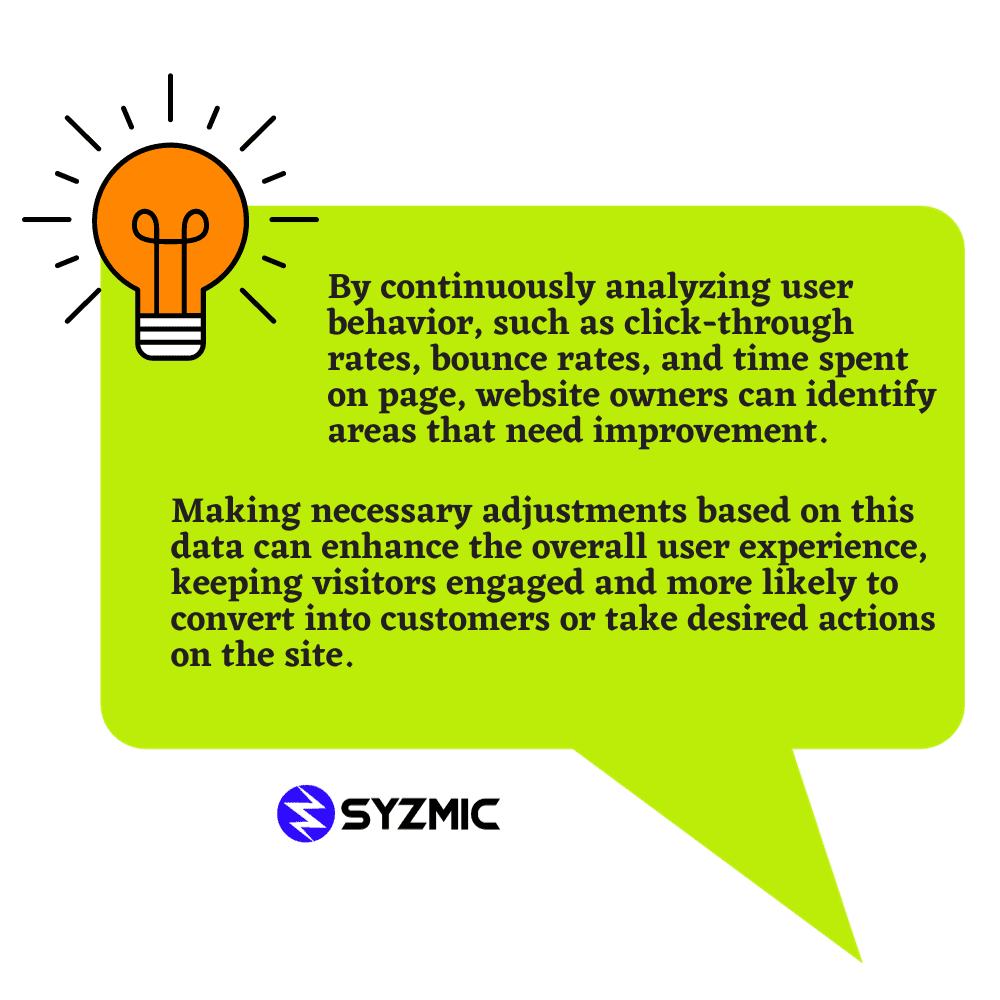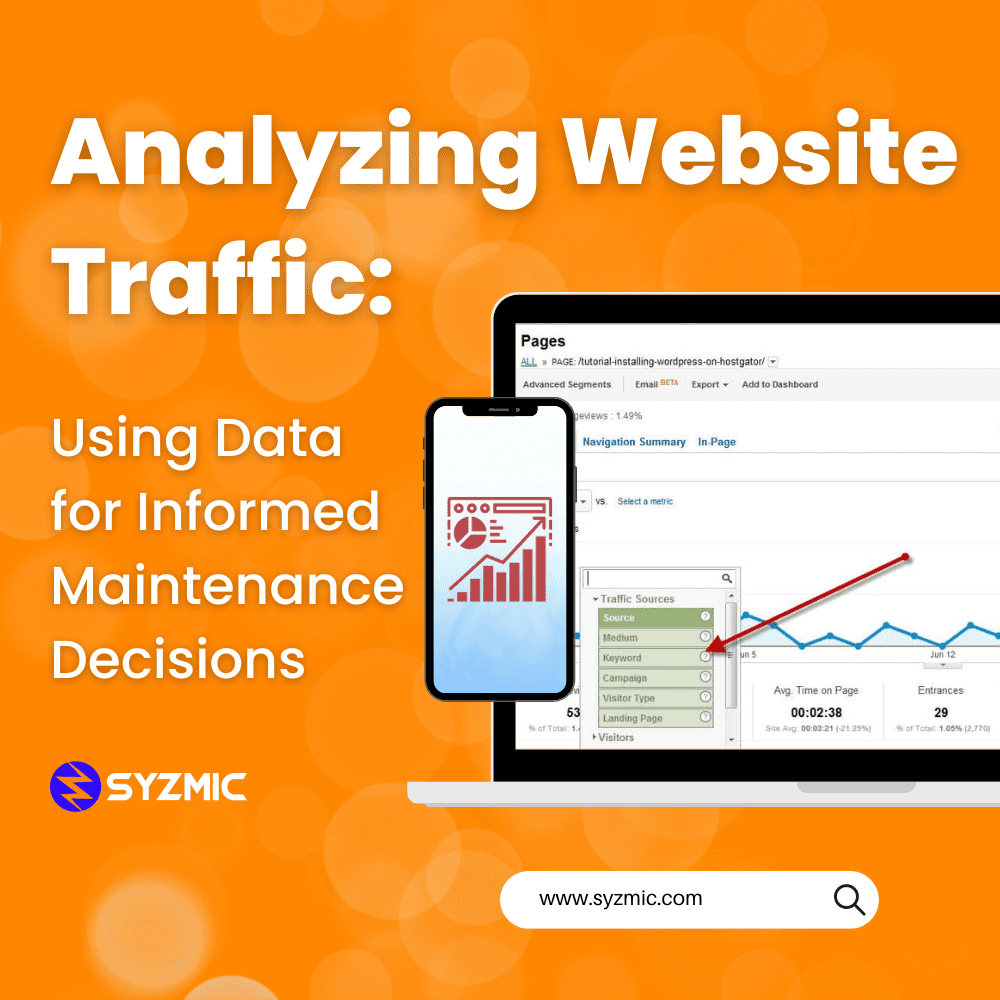Your website is the face of your business. It’s where potential customers interact with your brand, explore your products or services, and ultimately decide whether to engage with you. To ensure that your website continues to perform optimally, you need to make informed maintenance decisions. This involves more than just keeping things up and running; it’s about understanding your audience, improving their experience, and achieving your business goals. This is where data comes in. By analyzing website traffic, you gain valuable insights that drive strategic decisions. In this blog, we’ll explore the significance of data-driven website maintenance and how it can be a game-changer for your online presence.
Why Analyzing Website Traffic Matters
Understanding your website’s traffic is akin to knowing your customers in a physical store. It provides insights into who visits, what they’re interested in, and how they navigate through your site. Metrics like page views, bounce rates, conversion rates, and more, offer a window into user behavior. This data helps you identify what’s working and what needs improvement. For instance, a high bounce rate on a particular page may signal a need for content optimization, while a low conversion rate on a product page may indicate the necessity for a clearer call-to-action.
Setting Up the Right Analytics Tools
To embark on this data-driven journey, you need the right tools. There are several analytics platforms available, each with its own set of features and capabilities. Google Analytics is a popular choice, providing a comprehensive suite of tools for tracking and analyzing website traffic. Other options like Adobe Analytics and Matomo offer additional functionalities for more specialized needs. The key is to choose a platform that aligns with your business goals and provides the level of detail you require.
WebPulse makes changes to your website every month based on analytics. Want to keep your website up to date without the headache? Check out WebPulse!
Key Metrics to Monitor
With your analytics tool in place, it’s time to delve into the metrics that matter. Bounce rate, which measures the percentage of visitors who leave after viewing only one page, is a crucial indicator of engagement. Session duration tells you how long visitors spend on your site, providing insights into content relevance and user interest. Pages per session indicates the average number of pages a user views during a single visit, giving you an idea of how effectively your content encourages exploration. Traffic sources reveal where your visitors come from—whether through organic search, paid ads, social media, or direct navigation.
User Experience Optimization
User experience (UX) is a pivotal aspect of website maintenance. It encompasses everything from navigation to page load times to overall design. Data from website traffic analysis plays a vital role in UX optimization. For example, if you notice that a significant portion of your traffic is coming from mobile devices, it’s imperative to ensure that your site is mobile-friendly. High bounce rates on specific pages might signal a need for redesign or content improvement. Through A/B testing and user behavior analysis, you can make data-driven design decisions that enhance the overall user experience.


Content Strategy and SEO
Content is the heart of your website. It’s what informs, engages, and converts visitors into customers. Analyzing website traffic data offers valuable insights into how users interact with your content. High-performing pages provide clues about what resonates with your audience, allowing you to replicate that success in other areas. Conversely, underperforming pages may require optimization or repositioning. Keyword data helps refine your SEO strategy, ensuring that your content aligns with what your target audience is searching for.
Performance and Technical Maintenance
Website speed and performance are critical factors in user satisfaction. Slow-loading pages can lead to high bounce rates and frustrated visitors. By monitoring data related to page load times, you can identify and rectify performance bottlenecks. Technical issues, such as broken links or server errors, can also be pinpointed through traffic analysis. Regular audits and updates, guided by data-driven insights, are essential for maintaining a technically sound and user-friendly website.
Mobile Optimization
With the prevalence of mobile browsing, optimizing for mobile is no longer a luxury—it’s a necessity. Analyzing mobile traffic data provides insights into user behavior on smaller screens. It helps identify any disparities in navigation or content consumption between mobile and desktop users. Responsive design and mobile-friendly interfaces are paramount for providing a seamless experience across all devices.
Conversion Rate Optimization (CRO)
Conversion rate optimization focuses on increasing the percentage of visitors who take a desired action, such as making a purchase or filling out a contact form. Data-driven insights are central to this process. A/B testing allows you to compare different versions of a page to see which one performs better. Heatmaps provide visual representations of user interactions, highlighting areas of interest or potential friction points. By making data-backed decisions, you can implement changes that lead to higher conversion rates, ultimately driving more value from your website traffic.
Security and User Trust
Security is a top concern for both businesses and users. Analyzing website traffic data can provide valuable insights into potential security threats. Unusual traffic patterns or spikes may signal a security issue that requires investigation. Ensuring data privacy and implementing trust-building strategies, such as SSL certificates and secure payment gateways, are critical components of maintaining user confidence. By leveraging data, you can take proactive steps to safeguard both your website and your users’ sensitive information.
Staying Agile and Adapting
The digital landscape is constantly evolving, and so are user preferences and behaviors. Regularly analyzing website traffic data allows you to stay agile and adapt to changing circumstances. By identifying trends, emerging technologies, and shifts in user behavior, you can make informed decisions that keep your website at the forefront of your industry. Adapting to industry trends ensures that your website remains a valuable asset to your business. With WebPulse, your website is updated monthly to reflect analytics, allowing your website to constantly adapt without the hassle.
Conclusion
Analyzing website traffic data is not just about numbers; it’s about understanding your audience, enhancing their experience, and achieving your business objectives. In this blog series, we’ve explored each of these aspects in detail, equipping you with the knowledge and tools needed to harness the power of data for informed website maintenance decisions.








0 Comments